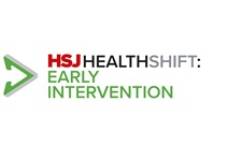Andrew Lansley is not the first health secretary to over-claim the benefits of his policies, neither will he be the last.
His regular claims – and those of other leading healthcare figures who should know better – that the involvement of GPs in commissioning is having a significant impact on changing referral practice, placing less demand on secondary care, have always sounded a little premature. But while referrals were down few people worried about the cause – given the challenges facing the system, good news was to be embraced whatever its source.
But as HSJ’s analysis of the latest referral figures shows, that downward trend has been decisively reversed. GP referrals are now at a level higher than the previous peak. What is more, it appears as if last year’s decline was influenced by the referral management schemes so roundly criticised by Mr Lansley and others. The irony of the health secretary claiming the benefit of actions he was simultaneously attacking will not be lost on primary care trust leaders.
The central question HSJ’s analysis raises is the practicality of clinical commissioning groups working with constituent practices to change referral practice significantly, swiftly and widely enough.
There is no doubt this approach is more desirable than any kind of “top-down” restriction. For one thing, a change in practice is much more sustainable than a central diktat that has to be constantly reinforced and policed.
It is also very early days for CCGs and the “look at the emperor’s new clothes” approach does no favours to these still emergent groups. The most developed CCGs are having some impact on referral practice, but, perfectly understandably, they are the exception. Most CCGs are still focused on authorisation and are likely to remain so for the rest of the year.
Controlling secondary care referrals from GPs is crucial to the financial and structural stability of the NHS. It is worth remembering that “other” referrals made by consultants as well as nursing and allied health professionals are rising steadily. Compared to the concentration on GP referrals there has been very little attention given to this trend. If it continues GP referrals will have to be reduced just for secondary care demand to stand still.
And much more than “standing still” is required. Across the country service redesign and efficiency plans all include ambitious assumptions that GP practices will soak up more demand by providing “care closer to home” and cut the reliance on the acute sector. Crucially this change is expected to be delivered within the next two and a half years. If CCGs are not successful in inspiring what will constitute a revolution in referral practice, then the parts of the system that will come under significant financial strain may outnumber those able to keep their heads above water.
It is perfectly possible this financial impact may affect service quality in an uncontrolled way as parts of the secondary care system break under the strain of rising demand and reducing revenue. It is equally possible that CCGs seeing this possibility may decide that a lesser of two evils would be to adopt some centrally designated treatment restrictions which, like some of those imposed by PCTs, had a good clinical evidence base. Better that, they might reasonably conclude, than dealing with the chaos created by a disintegrating hospital.
Any sensible analysis must determine that it is much too early to tell whether CCGs will be successful in influencing referral practice. The debate worth having is – given the real life context in which CCGs will have to operate – which methods will they forego in meeting that goal and which, however unpalatable, might they need to adopt if the situation warrants it?



























7 Readers' comments